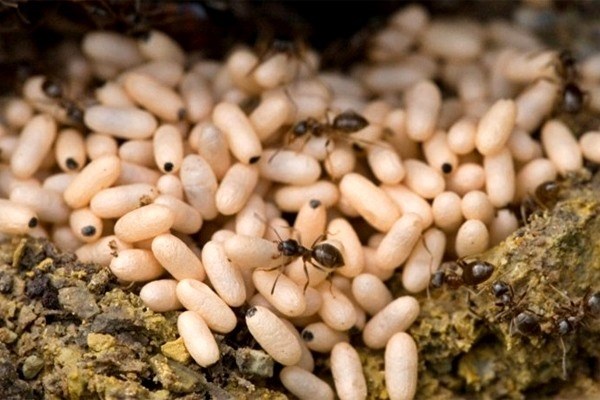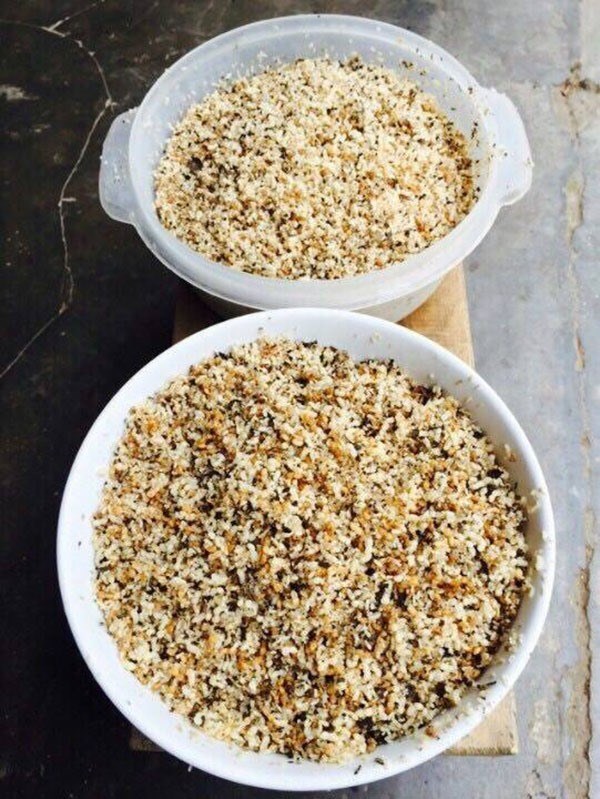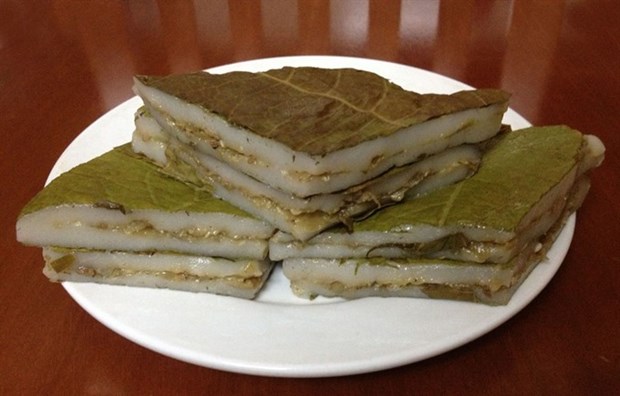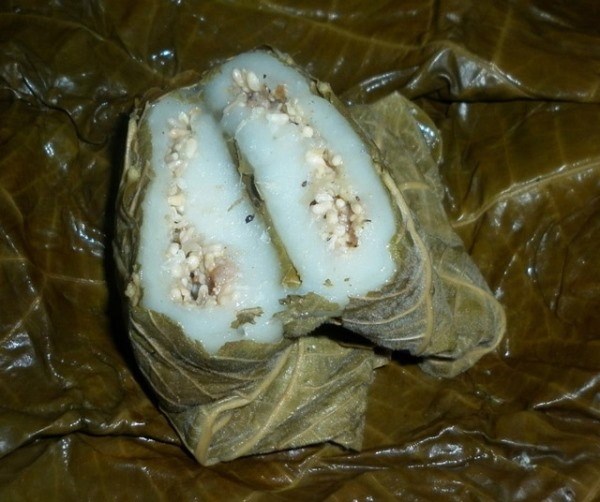89-year-old
Tày elder Nông Thị Pẻng revealed the secrets behind the unique dish. She said
it is only available in the springtime because that is when black ants
reproduce.
Pẻng
explained that black ant eggs are the only type that will work for the dish
because they are nutritious, fatty and very tasty.
The
ants make their nests in trees, often choosing forks in the branches. “We
collect the eggs from fig trees, cinnamon trees, and vầu – a type of forest bamboo,” said Pẻng.
Each
egg is as small as a rice seed and has a milky colour. Each nest produces
between 0.1 and 0.2 kg of eggs.

Forest feast: Eggs taken from black ant’s nests are used to make bánh nếp trứng kiến. Photos baotintuc.vn
Locals
collect nests in big baskets equipped with long handles to keep enough distance
from the ants to prevent bites, Pẻng said. Then, they carefully sift through
the nests to avoid breaking the delicate eggs.
To
make the cakes, high quality glutinous rice known as khẩu pét is soaked in water for two hours and then ground into a
powder with a mortar and pestle. The powder is kneaded into small balls and
filled with a mixture of ant eggs, fried dried onion, salt and peppers. Pẻng
said this process must be done carefully to keep the eggs whole.
Next,
the dumplings are wrapped in fig leaves. The leaves are picked at just the
right age to impart the dish with a special fragrance.
Once
wrapped, the dumplings are steamed for 30 - 45 minutes.
Pẻng
said that while the dish is full of protein and other nutrients, a diner trying
it for the first time should sample a small piece first to make sure she or he
is not allergic to the eggs.
Nguyễn
Hồng Quân, a visitor from Hà Nội, said he travels to Tuyên Quang in the spring
to visit his friends and enjoy the dish. He likes the soft texture, the
fragrance of the leaves and, above all, the greasy ant eggs.
Quân
recounted the legend of the dish’s creation. Once upon a time, there was a very
beautiful Tày woman. Her father said she would marry whoever could bring him
the most delicious cake. Rich families offered bánh dày (round cake), bánh
chưng (square cake), and many others delicacies.
One
man, too poor to afford a fancy cake, saw a big ant nest as he was walking in
the forest. When he opened it and saw it was full of milky eggs, he brought
them home and created bánh nếp trứng kiến.
He offered the dish to the woman’s father, who enjoyed it more than all the
expensive cakes he had been offered.
The
woman and the poor man married, and went on to live a very happy life.
“From
that day on, the Tày ethnic group makes the cake for important occasions such
as weddings or Tết celebrations,”
Quân was told by his friend’s grandfather.
Famed
Vietnamese physician Tuệ Tĩnh (1330-1400) wrote that in addition to the
nutrients they provide ant eggs can help cure many ailments. He recorded that
they could be used to treat ear infections, sexual dysfunction and bites from
venomous snakes.
Dr
Nguyễn Thị Vân Thái of the National Hospital of Traditional Medicine said
scientists from Việt Nam and Germany carried out a research project to
investigate Tuệ Tĩnh’s claims.
From
the research, Thái said the scientists developed prolin to help improve joint
health, threonine to boost central nervous system function and a treatment for
weak children.
“We
plan to preserve black ants to use their eggs to make more traditional
medicines for domestic use and export,” she said.

White Gold: Milky ant’s eggs ready to fill the cakes.

Ready to eat: A plate of enticing bánh nếp trứng kiến.

Natural snack: Many people enjoy the fig leaves used to wrap the cakes.
By VNS